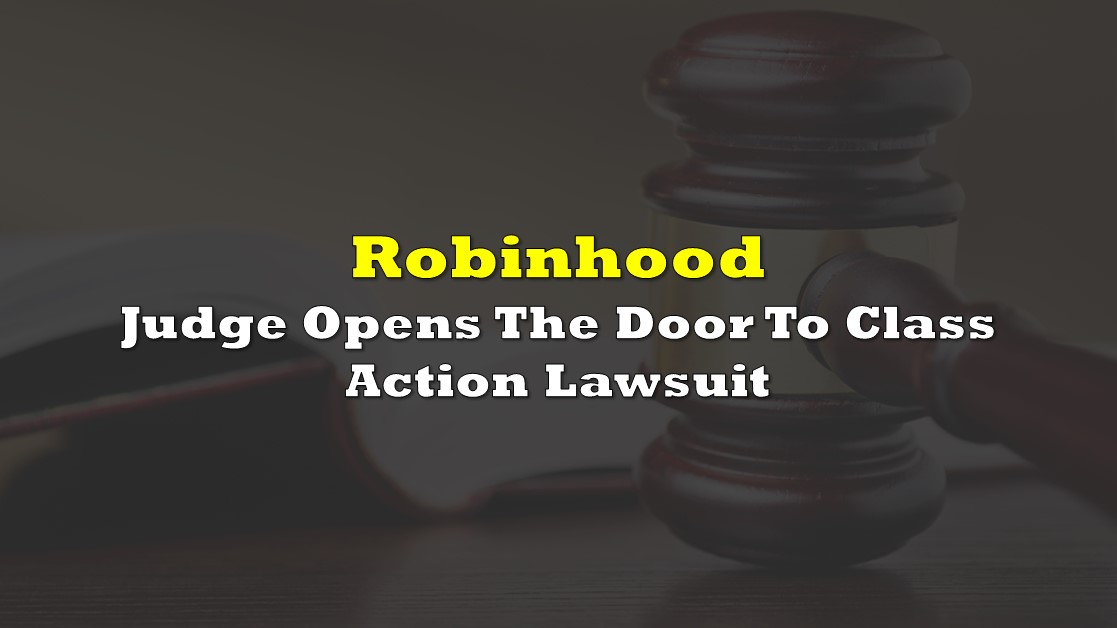The risks that Robinhood Markets, Inc. (NASDAQ: HOOD) faces from its use of a payment for order flow (PFOF) trading model appear to have risen significantly. On January 18, U.S. District Judge Yvonne Gonzalez Rogers of the District Court for the Northern District of California ruled that a class action lawsuit related to the practice can move forward.
Robinhood promises its customers “commission-free” trades. However, a group of customers accuse Robinhood of concealing how much its business relied on PFOF, which allowed the online brokerage to collect “unusually high” fees from the trading firms to which it routed orders. Robinhood currently sends 90% or more of its orders to these trading firms (also termed market makers or wholesalers).
PFOF is derided by full-service (commission-charging) brokers who contend that the practice results in a less favorable transaction price for the online broker’s clients.
READ: SEC’s Adverse Decision on Payment for Order Flow Negatively Impacts Robinhood
The judge ruled that the Robinhood customer group had standing to sue over Robinhood’s fraudulently concealing its actual trading costs. The class includes U.S. users of Robinhood who placed trades on the trading platform between September 1, 2016 and June 16, 2020.
Judge Gonzalez Roger’s decision follows a mid-December SEC decision which significantly undercuts the future usage of PFOF and will likely be implemented sometime after 1Q 2023. The SEC ruling will require brokers (like Robinhood) to send marketable stock orders of US$200,000 or less into auctions (which each take perhaps three-tenths of a second) where high-speed traders and institutional investors compete to fill the orders at the best prices.
An online broker can still route orders to a wholesaler under the amended rules, but the conditions for doing so are tough. Wholesalers must be able to beat a key price metric linked to auction behavior. Alternatively, wholesalers could be utilized in the unlikely event of auction failure.
The SEC’s new rule could ultimately force Robinhood to start charging commissions. It is unclear how that would be received by its current and prospective clients. Non-zero commissions could dim Robinhood’s appeal to its young customer base.
READ: US Government Seizes Sam Bankman-Fried’s $460 Million Robinhood Stake Tied To FTX
None of this can be considered good news for Robinhood. Its PFOF revenue comprised US$680 million of its overall US$1.34 billion revenue for the twelve months ended September 30, 2022.
While Robinhood looks reasonably valued, particularly after factoring in its enormous cash holdings — the company’s US$6 billion of net cash almost equals its US$7.8 billion stock market capitalization — uncertainties over the extent of its potential PFOF class action liability and its future revenue profile are significant. As a result, investors may want to limit exposure to Robinhood’s shares.
Robinhood Markets, Inc. last traded at US$9.52 on the NASDAQ.
Information for this briefing was found via Edgar and the sources mentioned. The author has no securities or affiliations related to this organization. Not a recommendation to buy or sell. Always do additional research and consult a professional before purchasing a security. The author holds no licenses.









